Editor

Of the 979 players who have put on the Wallaby jersey, only 67 have played at flyhalf.
While many consider Australian rugby in catch-up mode in 2024 when it comes to innovation, in truth, the role of the flyhalf has a lot to owe to many players who have worn the green and gold jersey.
From the growth of the Australian game after the Second World War, to supercharging its success in the late seventies and eighties, the role has become a critical specialist role in the context of rugby.
So, with the British and Irish Lions fast approaching and the Wallabies amid their European tour, we thought we’d correlate the ten best Australian flyhalves of the last 50 years.
We’ve judged the player’s capabilities based on their impact on the Aussie game as the starting flyhalf. Without further ado, let’s begin. Do you think any are missing? Let us know in the comments.
While often in the shadow of other celebrated playmakers from this period, it is easy to forget how good “the man for the job” was, not just as a solid general for the troops, but as an all-around player. Knox only picked up 13 caps for Australia over a 12-year career, but he sure made them count, scoring 130 points.
One of Australia’s most accurate kickers, he amassed over 600 points at provincial level playing for the Waratahs, Brumbies and later in the Currie Cup for the Sharks. He holds a club record 2,900 points at Randwick, making him one of the most successful players in the Shute Shield.
Throw in being part of the 1991 World Cup-winning side, and suddenly, Knox’s stint in gold looks a lot sweeter.
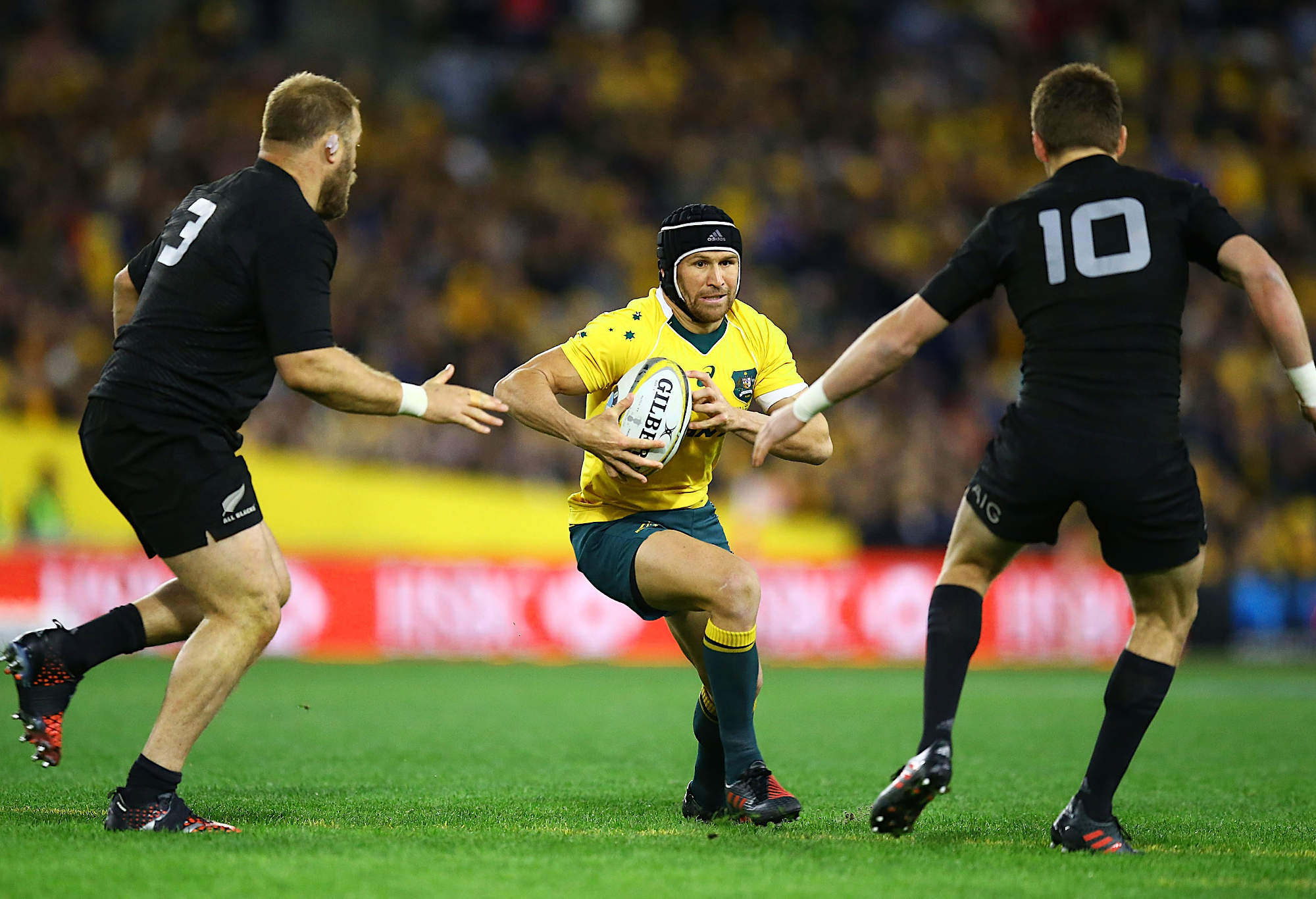
(Photo by Mark Nolan/Getty Images)
While Matt Giteau played most games in the centres during his stellar 14-year, 103-capped career, he enjoyed significant time in the number ten position. When you are picked by Robbie Deans as the successor to Stephen Larkham, you clearly must be okay at flyhalf.
Giteau would play the first two years of Robbie Deans’ tenure as Wallabies coach, and aside from one blemish of being in the largest ever loss in Wallaby history, he picked up results over England, France, Ireland, as well as beating South Africa at home.
He would inevitably shift to the centre from 2010 onwards, but his sheer versatility made him so valuable that Australia literally made a law to bring him back. He may not have won a World Cup, but finishing as a runner up twice is bloody close.
There was a reason why Australia excelled in the nineties and noughties: an abundance of high-quality players and insane depth – if a player went down, you could trust the replacement to be more than up to the task.
Elton Flatley is, like Giteau, more regarded for his work in the centres, especially during the 2003 World Cup. However, his work as an understudy flyhalf over his 38 test career is severely underrated. A 114-capped Queensland Reds legend, he is also behind some of Australia’s most famous victories as flyhalf – the biggest being the 2001 British & Irish Lions series decider.
If not for an unfortunate early retirement, he likely would have had more opportunity to excel at ten and likely would have landed higher on this list.
Like Flatley, Berrick Barnes’ career was one plagued by injuries. A key part of the Robbie Deans era, Barnes, alongside Giteau and later Quade Cooper, oversaw a massive period of change as a golden generation made their farewells.
A key cog in the Wallabies 2011 World Cup bronze medal campaign, Barnes came under heavy criticism during his time as flyhalf – the first of many playmakers up until the present day who would cop special treatment.
In retrospect, his 51 caps have a lot more highlights than many remember: including being part of the 2010 hoodoo-breaking victory over the All Blacks in Hong Kong, and also picking up the Wallabies’ first win in the Highveld since 1963 against the Springboks.
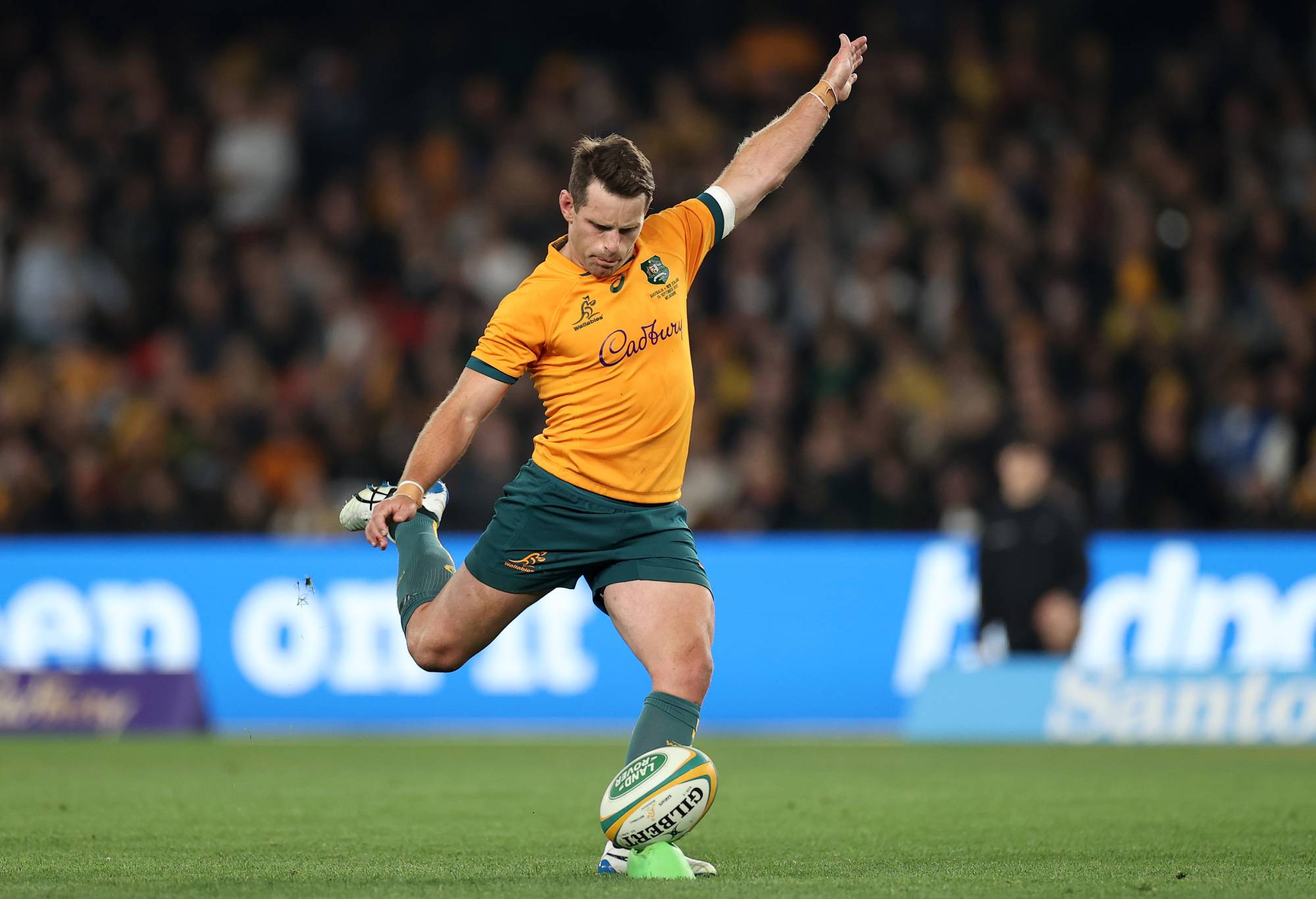
(Photo by Morgan Hancock/Getty Images)
Speaking of players enduring a mixed fan reception, our most recent pick on the list is a 76-capped Wallaby, who today is often more associated with an infamous Bledisloe moment in 2022.
The 2010s are a decade that Australian rugby will look back on with mixed feelings – form dropping off a cliff across the board, yet sprinkled in there were massive highlights including two Rugby Championship titles and a World Cup final. In most of those highs, you’ll find Bernard Foley.
‘The Iceman’ was behind the Waratahs inaugural Super Rugby title, and the stellar 2015 Wallaby campaign. One of the best playmakers to come out of NSW, the 119-capped Waratah has been discussed returning to the Wallabies on several occasions, and time will tell if his story has another chapter.
The oldest flyhalf on this list, McLean may be considered the most underrated Australian flyhalf ever. A 100-capped Queensland Red (who scored exactly 1000 points), a member of the fabled third golden age of Brothers Rugby Club – winning seven of eight grand finals, it was not just his provincial record where he excelled.
A 31-capped Wallaby, McLean became renowned for his goal-kicking and tactical kicking – grabbing an impressive 263 points. While his running game wasn’t as strong as fellow Wallaby Mark Ella, when put in combination, laid the groundwork for a change in the Wallabies’ style of play future legends would take forward.
When you have a stand at Ballymore named in your honour, you’ve left your mark on the game.
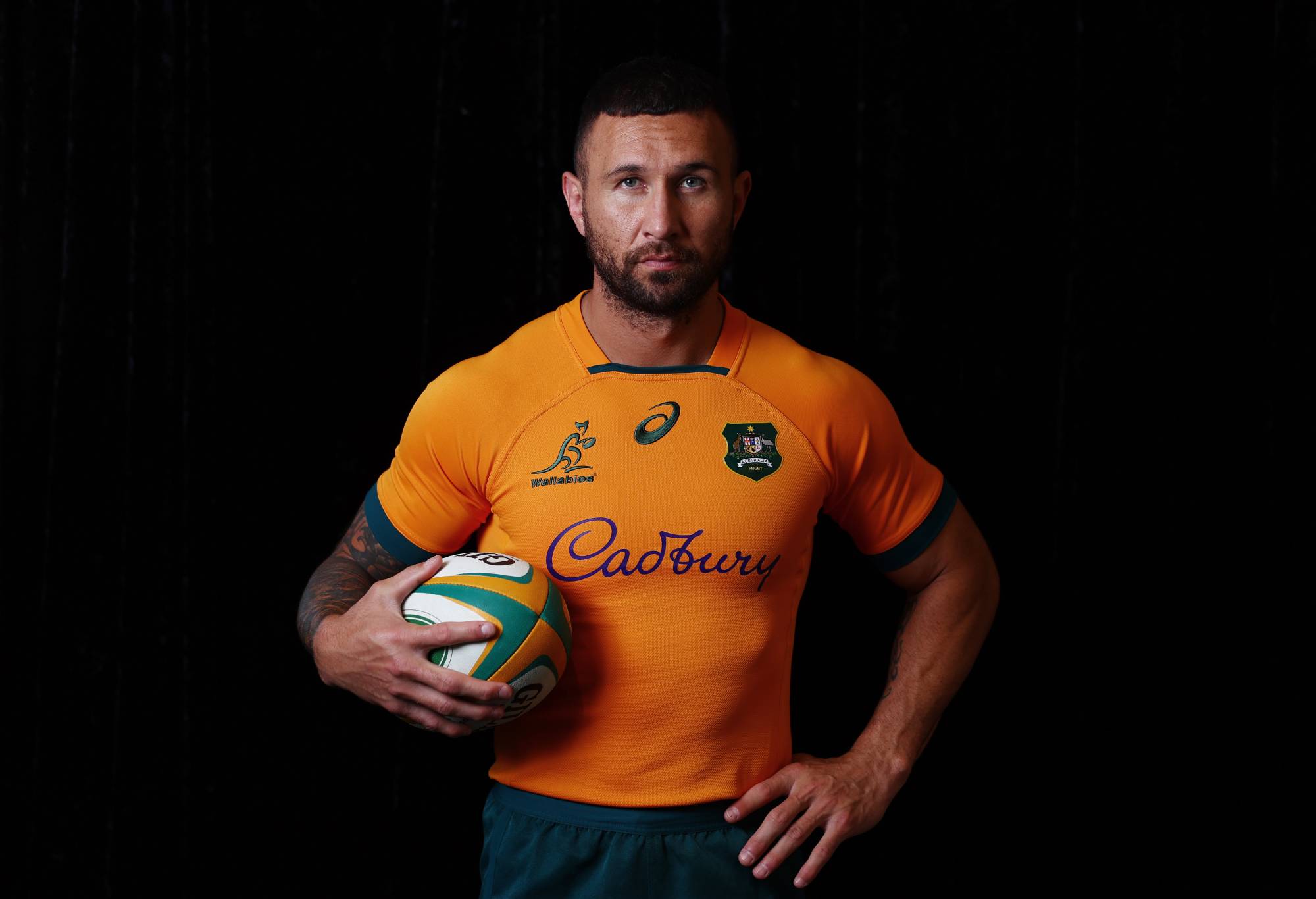
Quade Cooper. (Photo by Chris Hyde/Getty Images)
Hear me out. We’re in the part of the list where flyhalves defined the period they played. While Foley had many successes with the Wallabies in the 2010s, if you could boil the decade down to one defining player, it would be Quade Cooper. Love him or hate him, there is no denying how talented a footballer he is.
A 79-capped Wallaby and frequently partnered alongside scrumhalf Will Genia, Cooper’s unique approach to games and legendary footwork saw him become one of the biggest rugby stars worldwide, being the first choice flyhalf for the Wallabies’ successful 2011 Tri-Nations campaign and the 2011 Reds Super Rugby title.
When out of form, it was a car crash. When in form, the Wallabies were at their most dangerous all decade. The fact he tore apart the World Champion Springboks in 2021 after a four-year absence further showed few in gold have had an impact quite like him.
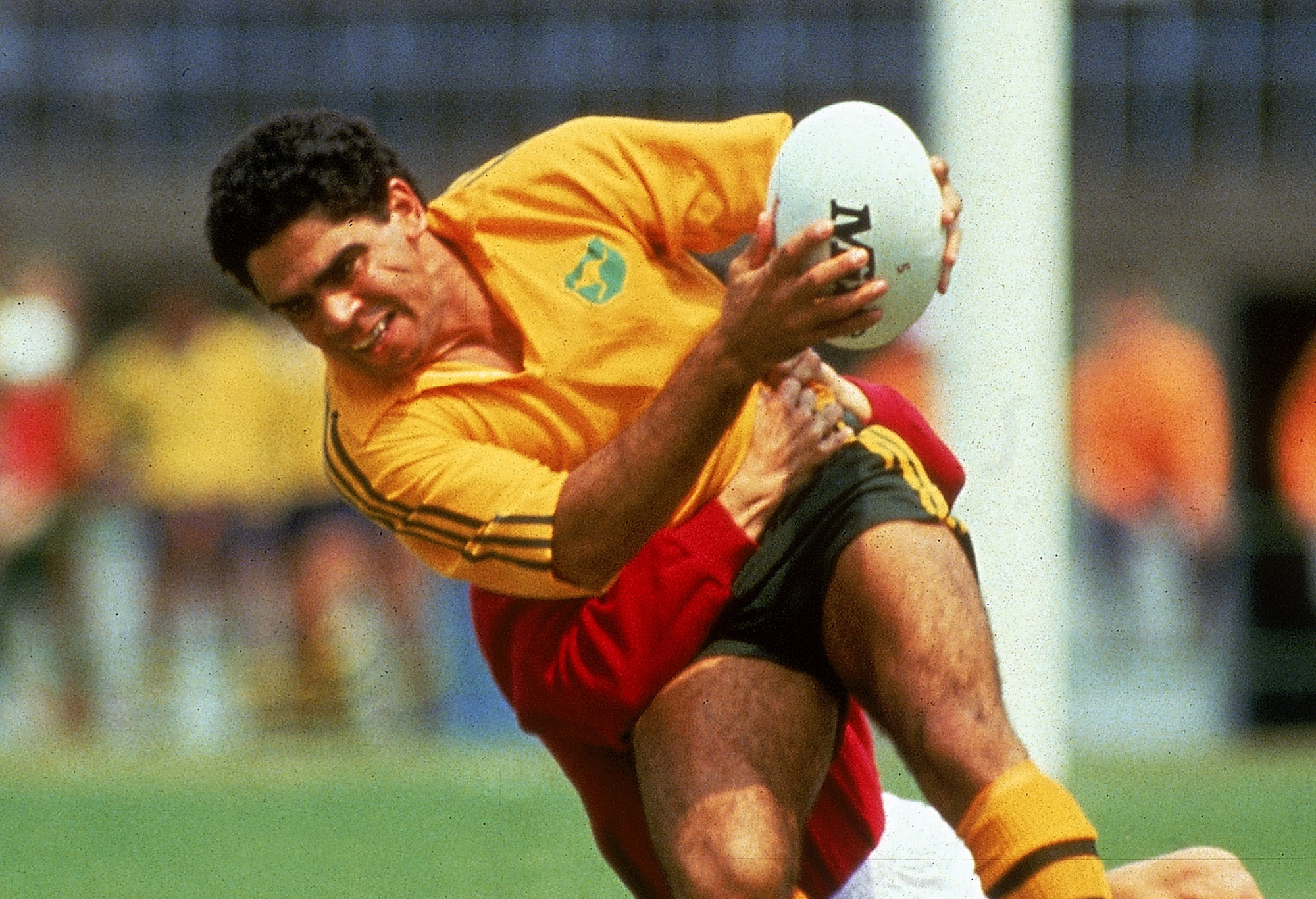
Wallabies legend Mark Ella. (Photo by Getty Images)
He retired at age 25 and only played in gold for four years, being capped 25 times. However, Mark Ella’s impact on the Wallabies cannot be understated. So popular and so loved to this day, when we did our Wallabies Greatest World Cup XV last year, commenters demanded his inclusion – even though he never played in a World Cup!
If there is one thing Ella is known for, it is the running rugby imprint he imposed on the Wallaby style of play in the eighties. However, he also possessed a mastery of the game’s structure, and his ability to open up space for Australia’s other weapons set the template for a golden age of the Wallabies.
Amongst a Bledisloe Cup, Ella is known for being part of the 1984 Grand Slam tour, scoring a try in each match. It remains the only Grand Slam Australia has achieved at the time of writing.
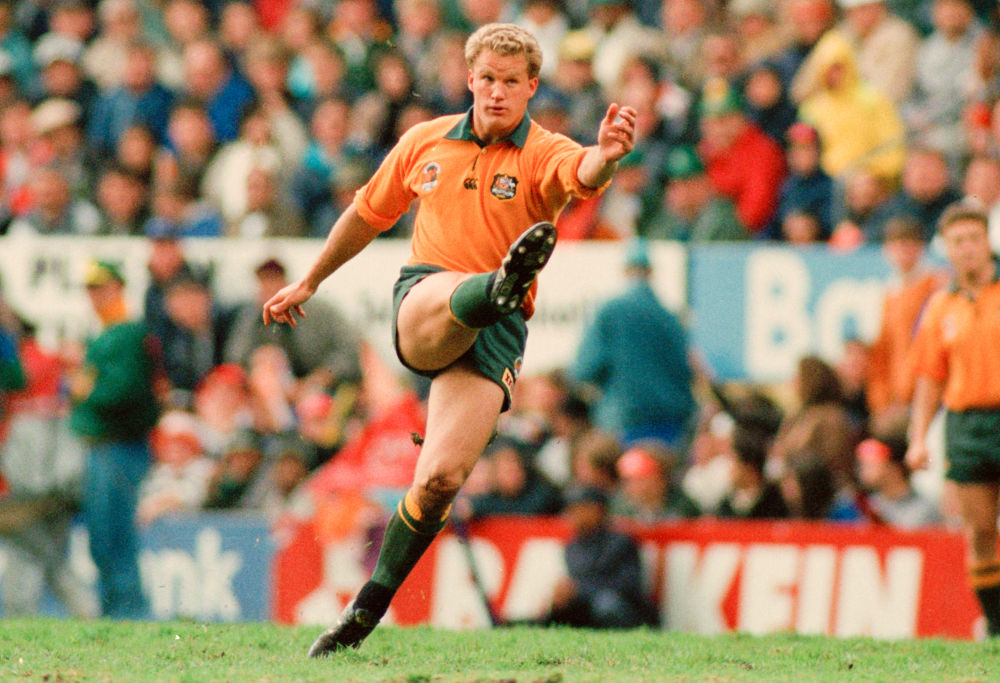
Michael Lynagh. (Photo by Simon Bruty/Getty Images)
Joining Mark Ella on that famous Grand Slam tour was a young Michael Lynagh. While he had debuted against Fiji earlier that year, his form on the Grand Slam set the stage for a once-in-a-generation career.
Lynagh stands out. Combining the kicking technique of McLean with the running rugby of Ella, he redefined Australian rugby. While the Wallabies underperformed at the inaugural World Cup and lost the 1989 British & Irish Lions series, Lynagh would have the last laugh – leading Australia to their first-ever World Cup.
Nick Farr-Jones called him the most complete player Australia has produced – and while Ella’s style envisioned a new style of the game, Lynagh – alongside the likes of John Eales, Willie Ofahengaue, Ewen McKenzie, Tim Horan and David Campese, among others – perfected it. They created the template for how Australian rugby should be.
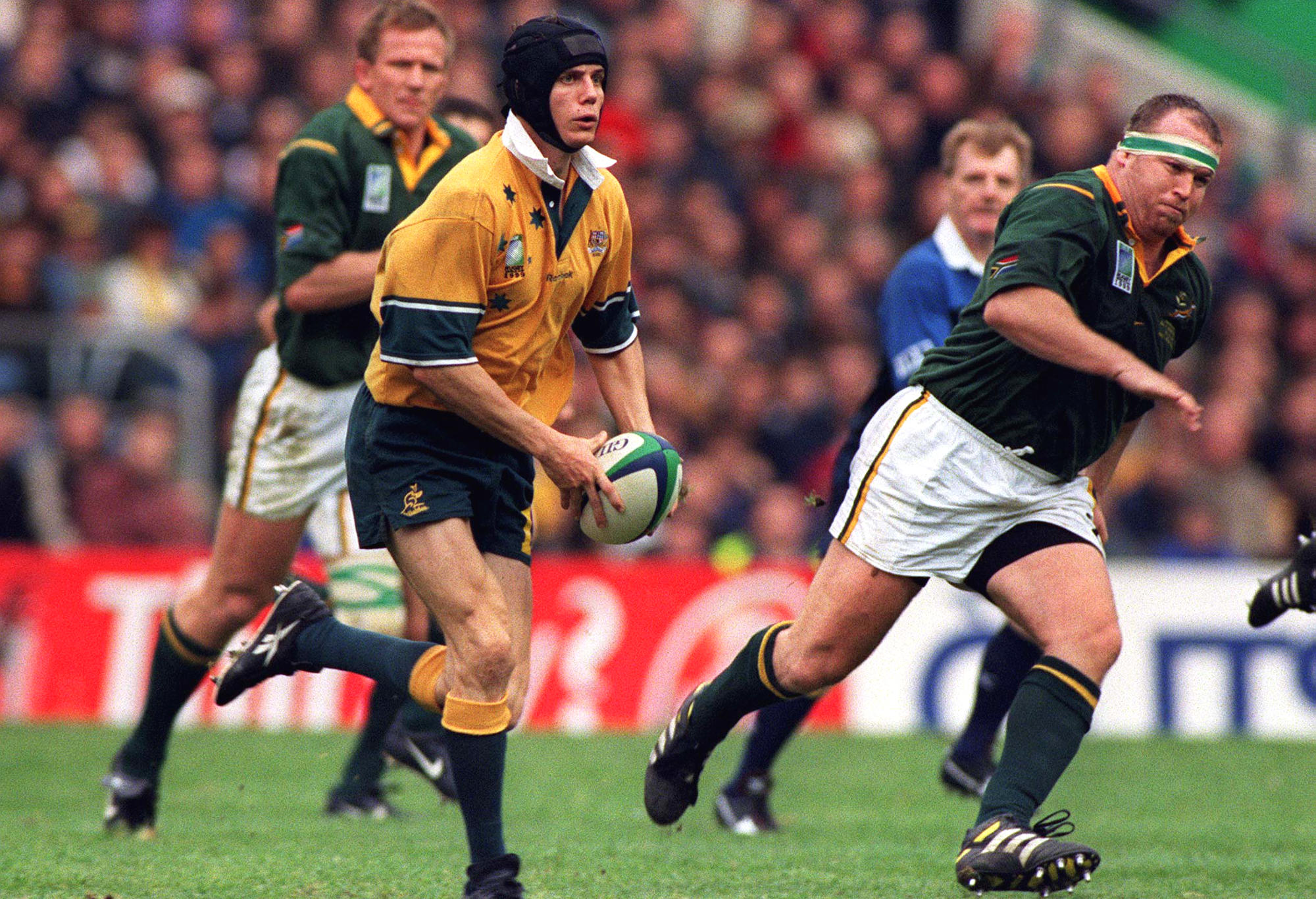
Stephen Larkham. (Photo by Ross Setford/Getty Images)
So, if Lynagh created the template, why is he not at the top? While he is foundational to professional Australian rugby, Stephen Larkham was the player who took everything Ella and Lynagh did to another level.
Probably the best player to come out of Canberra (George Gregan also enters the chat), Bernie usurps Lynagh for one, key reason: Larkham, combined with Rod Macqueen’s stewardship as head coach, created an era unlike any other: with a winning record of nearly 80 per cent. They won the 1999 World Cup, the 2001 British & Irish Lions tour, two Tri-Nations titles, and five consecutive Bledisloe Cups.
In 2023, Bernie was selected as flyhalf in The Roar’s Greatest Wallaby World Cup XV, showing that he has more than earned his spot as the best flyhalf Australian rugby has produced. It will take someone special to usurp him.